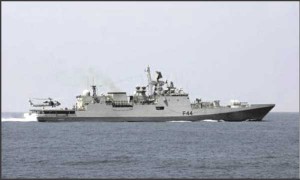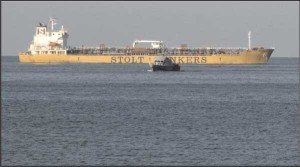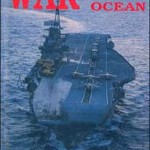Despite lessons from the past when India was subjugated by major sea powers, modern India is not particularly known for a maritime outlook. Recent events go further to underscore the ‘sea-blindness’ of its policymakers, which bears the potential to undermine not only India’s ‘vital’ interests, but also its foremost strategic imperative of ‘self-preservation’.
Securing ‘Vital’ Interests
On 15 September 2008, Somalin pirates hijacked MT Stolt Valor and held 18 of its Indian crewmen hostage. The Indian government took more than a month to respond. Furthermore, it was evident — at least from media reports — that its decision to dispatch warships for anti-piracy patrol was driven neither by the crisis per se nor by the recommendations of its Navy. It seemed to be impelled by public opinion mobilized by the wife of Stolt Valor’s master.
 The response was not only ‘too late’ but ‘too little’ as well. Even factoring the presence of warships from other countries, the sea area in question is too vast for a few warships to prevent attacks by the 1,000-odd Somali pirates operating in 25 to 30 groups. Once a merchant ship, fishing boat or yacht has been hijacked and taken into Somalia’s territorial waters, patrolling is pointless from the perspective of the victim vessel. A covert rescue operation by Special Forces in territorial waters then becomes exigent.
The response was not only ‘too late’ but ‘too little’ as well. Even factoring the presence of warships from other countries, the sea area in question is too vast for a few warships to prevent attacks by the 1,000-odd Somali pirates operating in 25 to 30 groups. Once a merchant ship, fishing boat or yacht has been hijacked and taken into Somalia’s territorial waters, patrolling is pointless from the perspective of the victim vessel. A covert rescue operation by Special Forces in territorial waters then becomes exigent.
However, New Delhi dithered to task its Navy for something that was legally permitted and more importantly, encouraged by UN Security Council Resolution (UNSCR) 1816 of June 2008. In contrast, many other seafaring nations like Denmark and France used the said legal provision for commando action in Somali waters, leading to rescue of their citizens and capture or elimination of pirates.
Of course, there are risks involved in such an operation, such as in terms of adverse international ramifications of collateral damage. But if the use of force is ‘proportionate’, its legitimacy can be justified. Even a failed mission is invaluable for deterring pirate activity.
It was thus hardly surprising that by the time UNSCR 1816 (June 2008) neared the end of its six-month life, it had made little progress to rein in the pirates. The success achieved by Indian warships to neutralise some of the criminals is commendable, but it has hardly made a difference, perhaps even in terms of deterrence.
In December 2008, concerted efforts of the US, Belgium, France, Greece, Liberia and South Korea led the UN Security Council to adopt UNSCR 1851, which went further to authorize international military action against pirates on Somalia’s land territory. But India — acclaimed as a “regional naval power” — was no where on the scene to display the will for a similar response.
The “˜sea-blindness in India seems to be a systemic phenomenon. Much that one might tend to believe, the sea no longer presents a barrier for trans-national low-intensity threats that seek to undermine Indias survival as a nation-state.
This was not the first time that Indian lives were held hostage by Somali pirates. There have been many such occasions since February 2006 when the Indian ship MV Bhaktisagar was hijacked along with its 22 crewmen. In all cases, the pirates got away with substantial sums of money as ransom. Bitter experiences of terrorism have lately led Indian policymakers to discard negotiation as an option in hostage situations. However, when a situation relates to piracy, there seems to be no resort other than waiting for shipping company to pay ransom money to the pirates. There is a little realisation that this is akin to whetting the pirates’ appetite and providing nourishment to a ‘monster’.
Piracy off Somalia and the Gulf of Aden became rampant since the first half of 2005. This maritime area falls well within India’s primary area of strategic interest, which has often been articulated by its political leadership. Sixty percent of its trade transits through these seas. Besides, considering that India contributes more than 1,00,000 seafarers to the global shipping fleet (11 percent of world’s mercantile human resource), many of the 25,000-odd merchant vessels traversing these seas each year are crewed by Indians.
 Despite much at stake in the area, it took India a long time and unusual circumstances to deploy its naval power; and that too, sans its full potential. Its well-trained and world renowned Marine Commandos (MARCOS) have since been employed on the warships on patrol for ‘visit and search’ if and when the warship succeeds in making the pirates surrender.
Despite much at stake in the area, it took India a long time and unusual circumstances to deploy its naval power; and that too, sans its full potential. Its well-trained and world renowned Marine Commandos (MARCOS) have since been employed on the warships on patrol for ‘visit and search’ if and when the warship succeeds in making the pirates surrender.
This is a task of a “ship’s boarding party”, rather than elite MARCOS, who have been imparted specialized training for hostage rescue.




